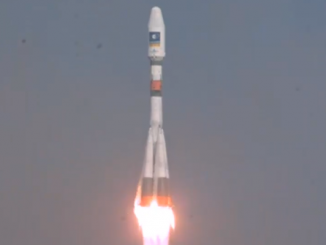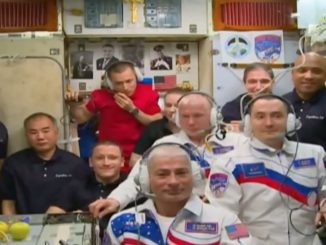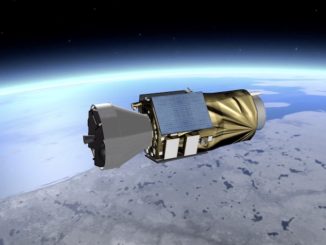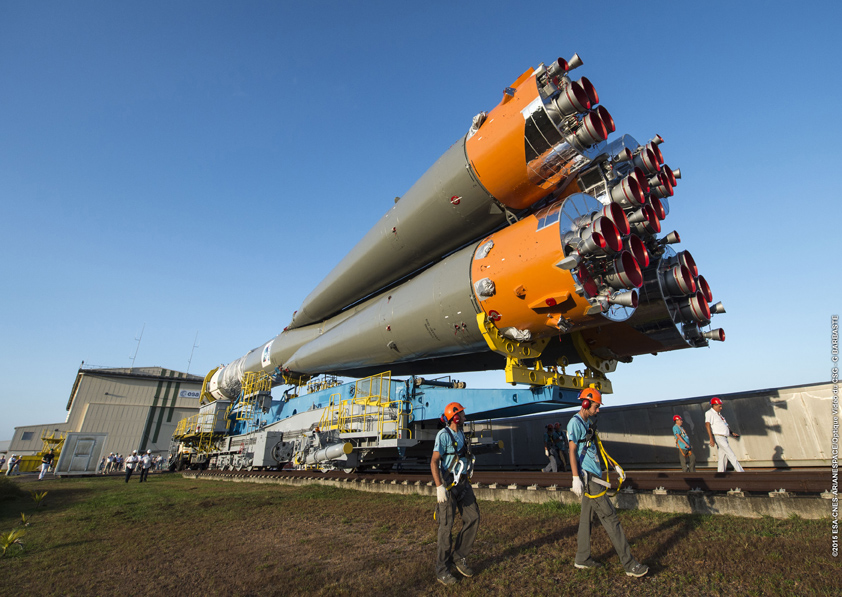
The next pair of spacecraft to join Europe’s growing Galileo navigation system, a civilian-run analog to the U.S. military’s Global Positioning System, will be added to the tip of a Russian Soyuz booster overnight Monday after the rocket’s rollout earlier in the day in French Guiana.
The venerable Russian rocket emerged from its assembly hangar just after daybreak Monday and rode on rail tracks for the 2,300-foot trip to the purpose-built Soyuz launch pad at the Guiana Space Center on the northern shore of South America.
After routing through an opening in the launch facility’s mobile service gantry, the rocket arrived at the pad and Russian technicians activated hydraulic lifts to rotate the Soyuz upright. Four petal-like hold-down posts closed to clamp on to the rocket, then the mobile service tower rolled into position around the booster.
The Soyuz rocket is set for launch at 0208:10 GMT Friday (10:08:10 p.m. EDT Thursday) with the ninth and 10th operational satellites for Europe’s Galileo navigation system.
It will be the 12th Soyuz launch from French Guiana since Russian launch operations commenced at the jungle space base in 2011, and Thursday’s flight will be the second Soyuz mission from there this year under the commercial auspices of Arianespace.
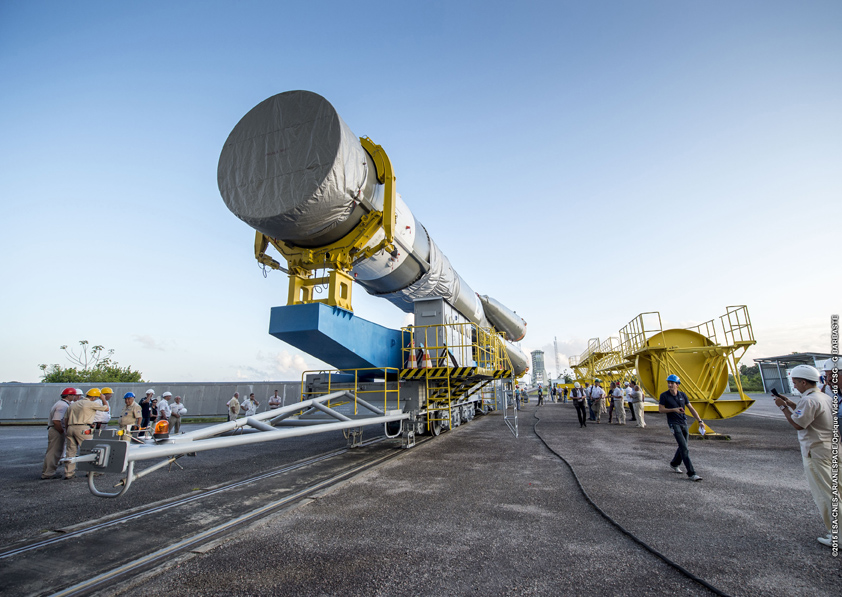
Made by German contractor OHB, the twin Galileo satellites were fueled with in-space maneuvering propellant, attached to a specially-designed dispense,r mated to the Soyuz rocket’s Fregat-MT upper stage, and enclosed within the launcher’s 13.5-foot-diameter nose cone in recent weeks.
The current launch campaign marked the first use of a new fueling facility at the European-run spaceport. Called FCube, short for Fregat Fueling Facility, the building was constructed to pump hydrazine and nitrogen tetroxide propellants aboard the Russian-made Fregat upper stage. The fueling operation was previously done in a separate building, but the new facility is dedicated to Fregat preparations, freeing up other assets to support Arianespace’s other missions.
Arianespace says the FCube, which was jointly financed by Arianespace, the European Space Agency and the French government, shaves about a week off the Soyuz launch campaign in French Guiana. It can also support fueling of small satellites launched by other rockets in Arianespace’s fleet.
The Fregat moved to the S3 processing facility after fueling in the FCube to meet the dual Galileo satellites.
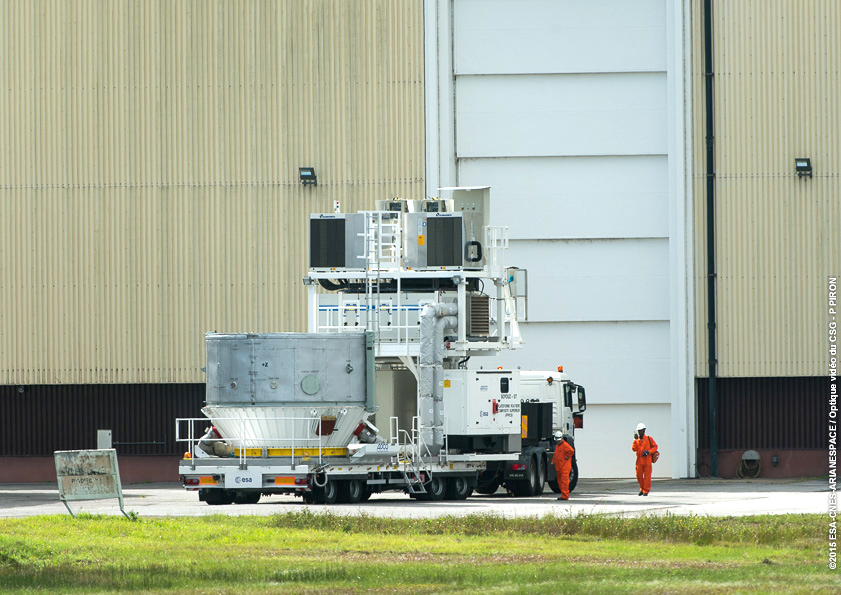
The Soyuz rocket’s upper composite will transfer from the S3 clean room to the launch pad late Monday and hoisted atop the launcher’s three-stage core.
A launch readiness review is scheduled for Wednesday, followed by the final countdown and Soyuz fueling operations Thursday.
After the late-night blastoff, the Soyuz and Fregat upper stage will take nearly four hours to deploy the two 1,577-pound (715-kilogram) satellites into a circular orbit with an altitude of 14,600 miles (23,500 kilometers) at an inclination of approximately 57.4 degrees.
Another pair of Galileo satellites is to be orbited by a Soyuz rocket in December, followed by three Galileo launches of four satellites at a time aboard the larger Ariane 5.
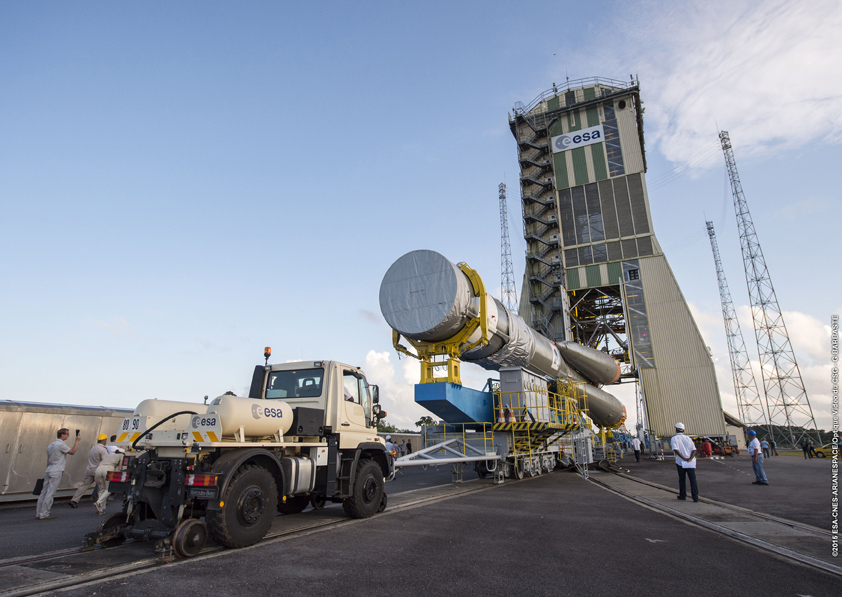
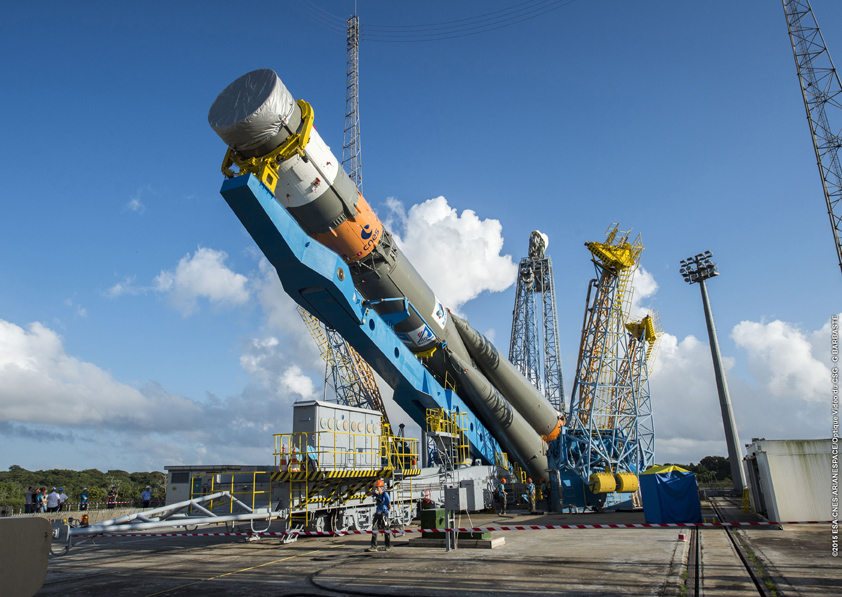
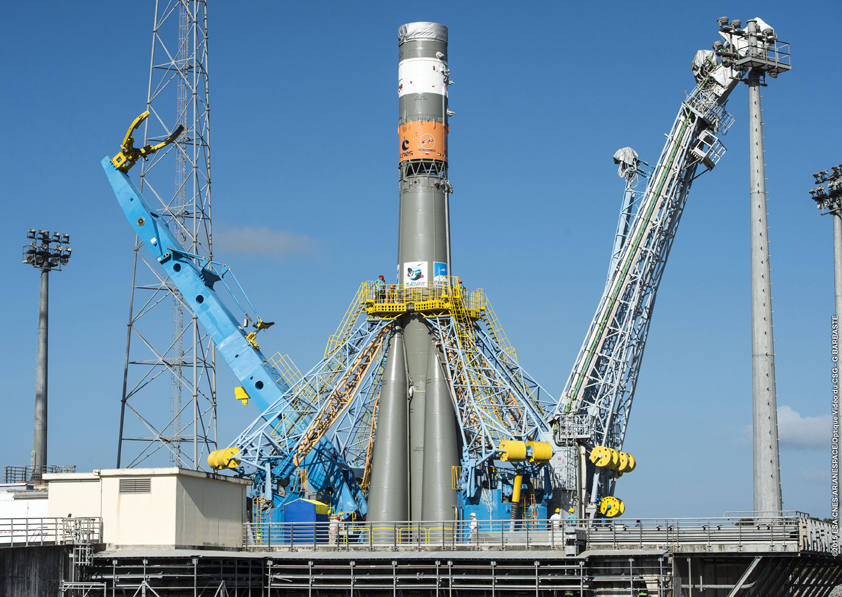
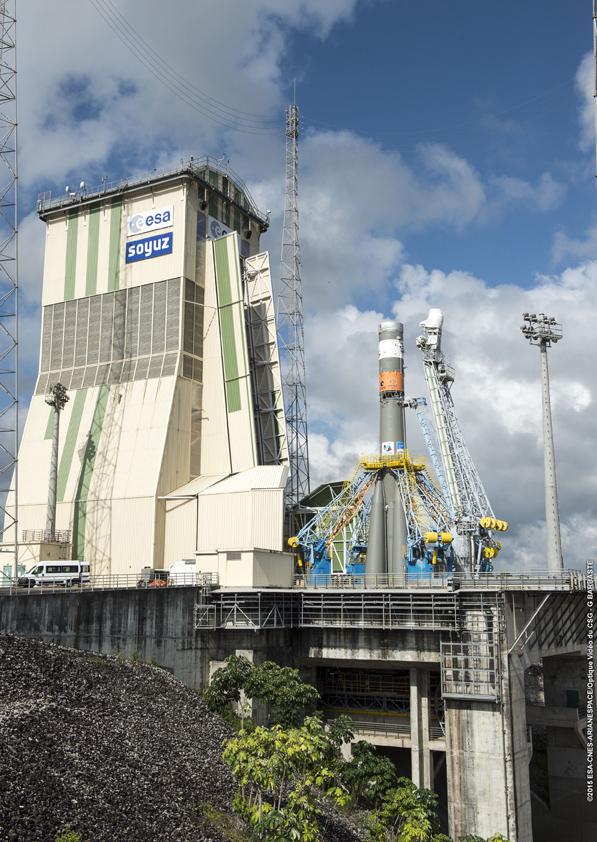
Email the author.
Follow Stephen Clark on Twitter: @StephenClark1.

